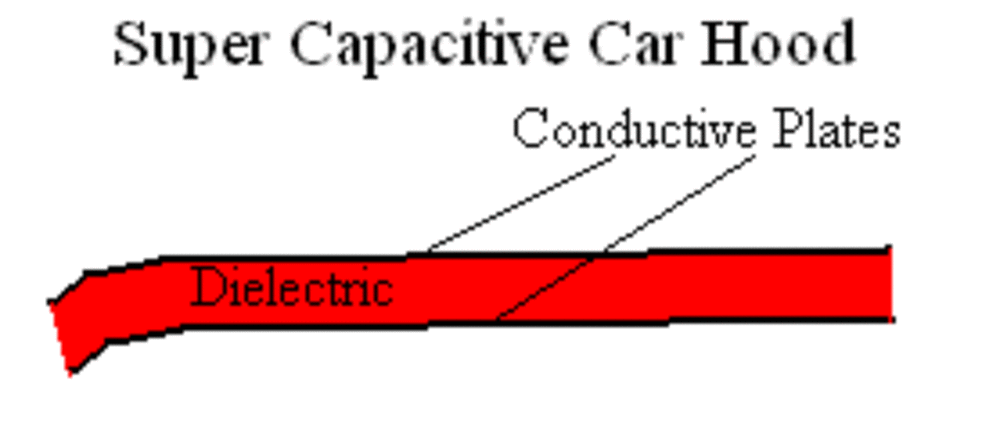It takes much more energy to accelerate a car than to keep it moving down the highway. Everyone knows this, but to accelerate an automobile you need lots of energy in a short period of time. This translates to huge batteries which weigh down electric cars and decrease over all performance and efficiency limiting how far and how fast an electric car can travel. Fabricating body panels in the form of “Super Capacitors” can greatly improve the performance of electric automobiles.
Super capacitor technology is relatively new. We can now make capacitors that will store huge amounts of electricity. Super capacitors are lighter, more efficient, and have less internal resistance than batteries. Super capacitors can charge and discharge almost instantly unlike batteries which take a lot of time to charge and are limited by internal resistance during discharge. Electric cars are less practical today because huge batteries are required to provide the power for acceleration and because it takes a long time to charge up the batteries.
Using super capacitors to augment acceleration-power reduces the required size of the battery and increases the power to weight ratio of the vehicle. Also, since capacitors can charge almost instantly, compared to batteries, charge times are greatly reduced.
Since the construction of a capacitor is two conductive plates (metal plates) separated by an insulator, also called a dielectric, why not make all the body panels of an electric car super capacitors. When the car needs extra energy to accelerate, just use some of the energy stored in the body parts of the car. Using the body parts of the car as a storage system will add no extra weight and occupy no extra space.
The super capacitive body of the car can be charged whenever the car is charged (whether by an onboard charger or plug in at night charging system) and could be trickle charged by a solar panel integrated into the roof of the car while sitting in the sun.
Any tooling already set up to fabricate metal body panels for electric cars could be adapted to make two of the same panels (only thinner) to be used as the electrodes of the capacitor. Sandwich the two panels around the super capacitive dielectric and use non-conductive sleeves through the panels to install them to the frame of the vehicle. The supercapacitive body panels will be connected in parallel to each other and to the battery system of the car through a charge regulator to control how, and when, energy is put into or taken out of the super capacitive body structure. Using supercapacitive body structures will initially be more expensive, but will revolutionize electric automobiles and finally make them feasible for everyday use because they can be recharged quickly and will have great acceleration.
Like this entry?
-
About the Entrant
- Name:Joel Phillips
- Type of entry:individual
- Patent status:none

